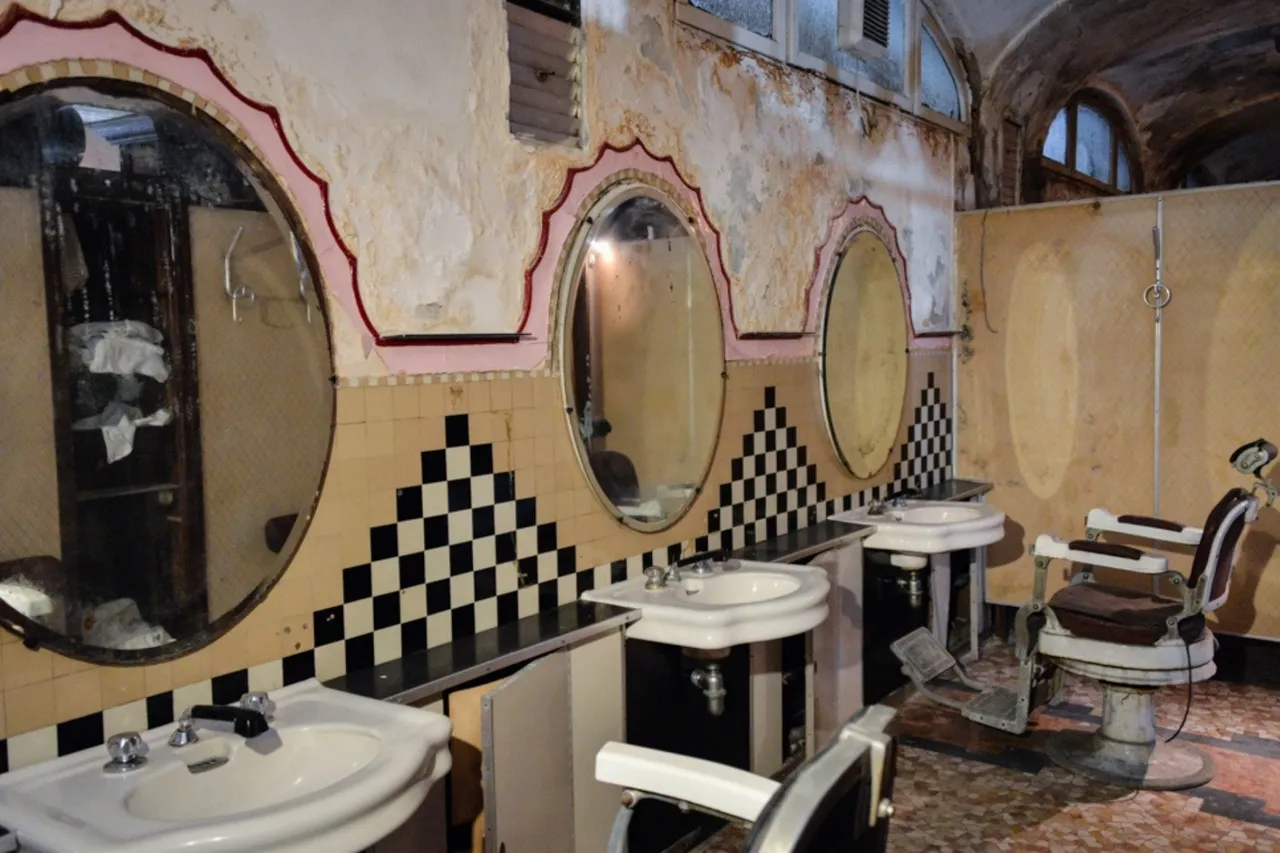Nestled beneath Milan’s bustling Piazza Oberdan, near the historic Porta Venezia bastions, lies an abandoned treasure: the Albergo Diurno Venezia baths, a relic steeped in history and intrigue.

History
Conceived by Marcello Troiani in 1923 and unveiled in 1925, these baths were a sanctuary for both travelers and locals alike, offering a wide array of luxurious and practical services. From baths and showers to shaves, manicures, and pedicures, the Diurno Venezia baths catered to every need of its discerning patrons.
The ambitious project boasted 30 bathrooms of varying opulence, ensuring that there was something for everyone, whether seeking a modest experience or a taste of luxury. With six shower cabins, changing rooms, ten toilets, two water closets, a coatroom, and even an ironing room, no detail was spared in providing a comprehensive range of amenities during its heyday.

Conceived by Marcello Troiani in 1923 and completed in 1925, the Diurno Venezia baths weren’t just a place for hygiene; they were a hub of convenience and luxury, catering to the needs of both travelers and Milanese residents alike. Offering a comprehensive range of services, patrons could indulge in baths, showers, shaves, manicures, and pedicures, all within its elegant confines. With 30 bathrooms of varying opulence, including everything from modest to lavish, and amenities like six shower cabins, changing rooms, toilets, water closets, a coatroom, and even an ironing room, the establishment spared no effort in ensuring a comfortable experience for its clientele during its prime.

But Diurno Venezia went beyond mere hygiene; it was a multifunctional space designed to meet diverse needs. In addition to its grooming facilities, the venue boasted a buvette, a fully operational Post Office, meeting rooms for business gatherings, flower shops, newsstands, a stationery store, a bank, a commercial agency, a barber shop, phone booths, a copy bureau, a small luggage storehouse, a travel agency, a bicycle garage with an attendant, and even a shoeshine stand.

What Happened?
What set Diurno Venezia apart were its intricate Italian Art Deco features, particularly the mosaic decorations scattered throughout the building. The vaulted ceiling of the main hall and the gracefully arched iron beams at its entrances added a touch of sophistication.
Sadly, one entrance was demolished in the 1960s to make way for a subway exit, marking a downturn for the establishment. Despite this, two columns remained as poignant reminders of its former glory, with one serving as a decorative element and the other cleverly concealing a chimney connected to the underground boiler.

The barber shop of Diurno Venezia stood as the last surviving piece of the once vibrant establishment, operating until as late as 2006. After its closure, the entire complex remained abandoned, its former glory visible only to those daring enough to trespass, until March of 2014.
A significant shift occurred when the Italian National Trust (known as Fondo Ambiente Italia, or FAI) intervened. Dedicated to the restoration of Italy’s cultural heritage and the preservation of its beauty for public enjoyment, FAI spearheaded efforts to revive the baths.
Through organized cleanup events, a diverse group of volunteers, including altruists, photographers, and urban explorers, were granted access to the site in exchange for their assistance in clearing away accumulated debris. This initiative marked a crucial step in the restoration and rediscovery of this historical gem.

Today, the Albergo Diurno Venezia is steadily undergoing a transformation, moving toward a full revival and reopening. Embracing its past while embracing modernity, the space is being reimagined as a contemporary wellness center, welcoming all through its classic yet underutilized gates.

